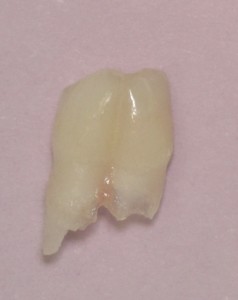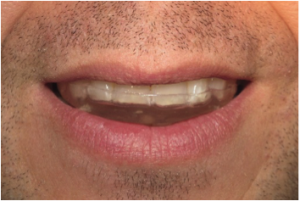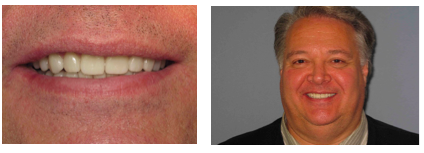By: Dr. Elizabeth Eggert
How did Eggert Family Dentistry meet Tim?
| Before | After |
Tim came to us as an established patient at one of his routine exams. He was experiencing increasing tooth sensitivity and pain throughout his mouth. He had noticed his teeth had become shorter over the years. Dr. Elizabeth noted excessive wear throughout his mouth and recommended Tim go through Dr. Eggert’s records process so she could delve deeper into the underlying causes behind his cracking, breaking, and sensitive teeth.
What did Tim want?
Tim had noticed a lot more wear in the last decade and wanted healthy and comfortable teeth again. He also wanted better-looking teeth. Specifically, Tim wanted his teeth to be whiter, more even, and to function better. He had many worn teeth, and wanted a comprehensive plan for restoring them.
What was revealed during the records process?
Dr. Elizabeth used models, photos, and x-rays of Tim’s teeth along with our thorough muscle and joint evaluation to present Tim with the current health of his teeth, gums, and the function of his jaw and muscles. The details of the records process revealed the position of Tim’s teeth caused multiple interferences. He was biting down unevenly, causing the breakdown of his teeth. Dr. Elizabeth was also suspicious of the severe acid erosion of Tim’s enamel. This deterioration was also negatively impacting both the look and function of his teeth. Tim needed a full mouth reconstruction to rebuild what had broken down.
What does Tim think?
“I’m very happy with everything. The sensitivity is completely gone and they look great! It has changed my life because I don’t have to hurt, and of course you feel better when you have a nice smile. My wife and my mom both love them! I would tell anyone who was considering getting something like this done to do it, and I would tell them to come to Dr. Elizabeth Eggert.”











